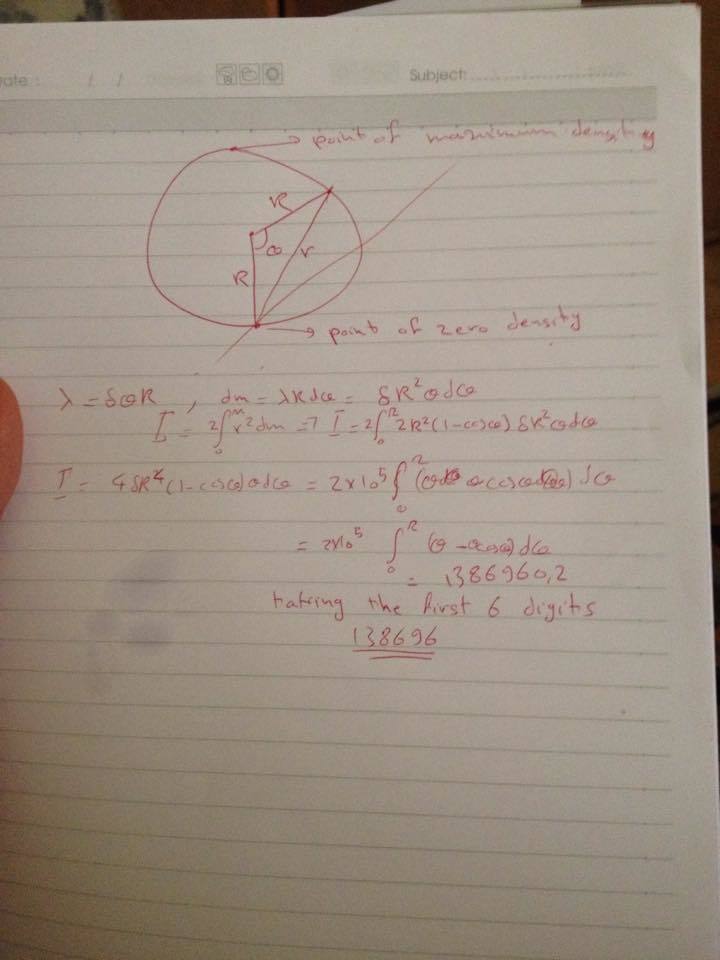Ring of non-uniform density
A rod of length 2πR has non uniform density such that density at a point can found by multiplying a constant δ to the distance of the point from the nearer end. This implies that density at end points is zero and is maximum at centerof rod.
Now this rod is bent to form a circular ring (max and zero density points are dimetrically opposite).
Find the moment of inertia of the ring about an axis passing through the point of zero density and perpendicular to plane of ring.
Details and Asumptions
∙ R = 1 0 , δ = 5
∙ input first 6 digits of the answer
Feel free to report.
The answer is 138696.
This section requires Javascript.
You are seeing this because something didn't load right. We suggest you, (a) try
refreshing the page, (b) enabling javascript if it is disabled on your browser and,
finally, (c)
loading the
non-javascript version of this page
. We're sorry about the hassle.
1 solution

Log in to reply
according to the problem the density is given by
λ = δ x where x is the distance from the end of the rod till the point when we bent the rod we have two parts of the rod with same mass and inertia (like we have divided the ring into two equaled parts ) We calculate the momentum of inertia in one part the multiply it by 2 when we move to polar coordinates the x transform into R θ we know that J = ∫ r 2 d m here m = λ R θ that yields d m = λ R d θ and J = ∫ ( R + R ) 2 d m then J = ∫ 2 R 2 ( 1 − c o s θ ) λ R d θ then
J = ∫ 0 π 2 R 2 ( 1 − c o s θ ) λ R d θ putting λ = δ R θ then J = ∫ 0 π 2 δ R 2 ( 1 − c o s θ ) R 2 θ d θ Dont forget to multiply by 2 because you are calculating for only one part of the ring
J = ∫ 0 π 4 δ R 4 ( 1 − c o s θ ) θ d θ = 1 3 8 6 9 6 0 . 2
hope my solution had done its' purpose.
Log in to reply
I solved it too
I got slightly confused by the first 6 digits. Try to ask for the answer in some better format like giving the answer in equation form with a,b,c and then ask for any operations using them.